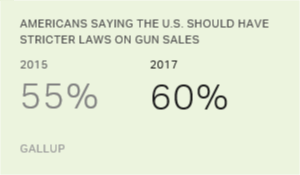Story Highlights
- 22% of Americans say someone in their household was a crime victim
- This year's percentage is the lowest since 2001
- Average for previous decade had been 26%
WASHINGTON, D.C. -- Twenty-two percent of Americans say a conventional crime was committed against their household in the previous 12 months, the lowest proportion since 2001. Over the past decade, the percentage reporting their household was victimized by any of seven different crimes averaged 26% and never dropped below 24%.

Â鶹´«Ã½AV began computing its annual index of self-reported crime victimization in 2000. The index is based on the "yes" responses from U.S. adults as to whether they or anyone in their household was the victim of any of seven common crimes -- ranging from vandalism to violent crimes -- in the past 12 months.
This year's drop in crime was not reported across all groups equally. Nonwhites and those with annual household incomes under $40,000 are about as likely this year as they were in 2016 to say their household had experienced a crime.
Some crimes were also much more likely to occur than others:
- 12% said someone in their household had money or property stolen, down from 17% in 2016.
- 10% were the victims of vandalism, down from 14% last year.
- 3% had their house or apartment broken into, down from 5%.
- 3% had an automobile stolen, compared with 4% in 2016.
- 2% said someone in their household was mugged or physically assaulted, compared with 3% last year.
- 2% said someone in their household was sexually assaulted, compared with 1% in 2016.
- 1% had money or property taken by force with a gun, a knife, another weapon or physical attack, compared with 2% in 2016.
Each year since 2000, vandalism and theft have been the most common crimes that Americans experience. The percentage saying these types of crimes occurred to them or someone in their household has never dropped below 10%, while no more than 6% have experienced the other types of crime.
In all cases, the crime may or may not have been reported to the police. Some official statistics on crime rely only on counts of crimes reported to police, so they may underestimate crime incidence. Not included in the list are digital crimes such as identity theft or computer hacking, which will be the subject of a future Â鶹´«Ã½AV report.

Â鶹´«Ã½AV Analytics
Subscribe to our online platform and access nearly a century of primary data.
Percentage of Americans Personally Victimized Changes Little Over Time
Asked about their own experiences rather than the situation for their household as a whole, 15% of U.S. adults say they have been the victim of at least one of the crimes. That is an insignificant drop of one percentage point from last year's 16%. Since the index's inception in 2000, annual results have ranged between 14% and 19%.

Most personal victims of a crime -- 10% of all adults -- say it happened once in the last year. But another 5% were victimized at least twice.
Bottom Line
Americans ranked crime as one of the nation's most important problems two decades ago, but the combination of dramatically falling crime rates through most of the 1990s and the rise of other issues in the new century pushed it down the priority list of national problems.
With at least one in four American households victimized by crime every year from 2008 through last year, however, the threat of crime has continued to be a concern for many Americans.
Theories abound for why crime rates rise and fall, and it is too early to know whether this year's drop in reported crime will be sustained. But at worst, it ends the increase of recent years and, at best, it holds the potential to signal further reductions in crime in the future.
Survey Methods
Results for this Â鶹´«Ã½AV poll are based on telephone interviews conducted Oct. 5-11, 2017, with a random sample of 1,028 adults, aged 18 and older, living in all 50 U.S. states and the District of Columbia. For results based on the total sample of national adults, the margin of sampling error is ±4 percentage points at the 95% confidence level. All reported margins of sampling error include computed design effects for weighting.
Each sample of national adults includes a minimum quota of 70% cellphone respondents and 30% landline respondents, with additional minimum quotas by time zone within region. Landline and cellular telephone numbers are selected using random-digit-dial methods.
View survey methodology, complete question responses and trends.
Learn more about how the works.




